We've all hit the invisible wall, that intersection of mounting fear and deepening lean angle beyond which we cannot go.
Like a sci-fi forcefield, it blocks us from moving into an area that we know, intellectually, is ours for the taking. We see others maneuvering there with ease, yet something within us refuses to obey our commands to enter, no matter how vehement or gentle our internal voice. What's going on?
Danger! Danger!
For perspective, let's peek at some psychological research with infants. There's a contrivance called "the visual cliff" that offers a way of thinking about our leaning limitations. Imagine a rectangular Plexiglass table with two sections. One half is covered with an opaque checkered pattern, the other half is left transparent. Beneath the latter is a continuation of the checkered pattern on the floor several feet below. A baby at the crawling stage is placed on the checkered area as its mother stands at the opposite end, coaxing her child to come to her. The baby crawls to the edge of the checkered surface, then balks at venturing out onto the clear zone — not out of concern about the Plexiglass breaking, but because the visual cues it's capable of processing indicate there's nothing there to support it. As far as the baby can tell, it would tumble to the ground below if it went beyond the limit of its painted perch.
This experimental design was meant to investigate aspects of early childhood depth perception, but it also illustrates an innate reaction hardwired to keep us safe from falling — even when there is no real danger and someone we trust is providing reassurance. When our senses insist we're going to fall, our body believes them and the resulting visceral inhibitions override our conscious assessments and intentions, creating an approach/avoid conflict. The baby on the visual cliff may struggle mightily to overcome its apprehension and reach its beckoning mother's arms, yet it remains paralyzed by its aversion to a presumptively painful plummet.
Sound familiar? Isn't this what we feel when enticed by the exhilaration of harder cornering and encouraged by riding buddies or coaches who explain and show us a motorcycle actually won't flop onto its side, as our senses predict? I've encountered a couple of rare souls who were shockingly able to follow such guidance without hesitation, blithely oblivious to the dangers involved. You might think these exceptional newbies made great students, but they demanded lots of extra supervision and extremely precise wording because of their lack of built-in reservations. Fearlessness isn't the same as courage, and fear itself isn't necessarily a bad thing; it's a normal, valuable response to risk of harm. Imagine caring for a child utterly unconcerned about falling off things — now picture that child as an adult!
On the other hand, it's vitally important to learn the difference between fears based on reality and fears based on fantasy or misunderstanding; we wouldn't want our kid to stay terrified of stairs and be unwilling to use them. The project, then, is to temper fear with well educated discernment, learning what's actually true and false on the basis of logical reasoning, social consensus and support, and concrete experience. That baby at the edge of the visual cliff doesn't have our capacity for rational contemplation; it can't think about Plexiglass as a structural element with certain known qualities and calculate its load-bearing properties on those grounds. But it can be compelled by the strength of its attachment to its mother (including both a desire to be with her and a faith in her benevolence) and eventually place a hand tentatively on the transparent expanse between them. After feeling for itself the counterintuitive resistance to gravity afforded by the invisible surface, the baby might try resting more of its weight on that first hand. With success there, it might extend its other hand over the seeming abyss. More evidence things are not as they appear will prompt the scooting of one knee, then the other, and finally the baby is no longer looking down through the Plexiglass — it's wriggling excitedly toward its mother, eyes on the prize, no longer worried about falling.
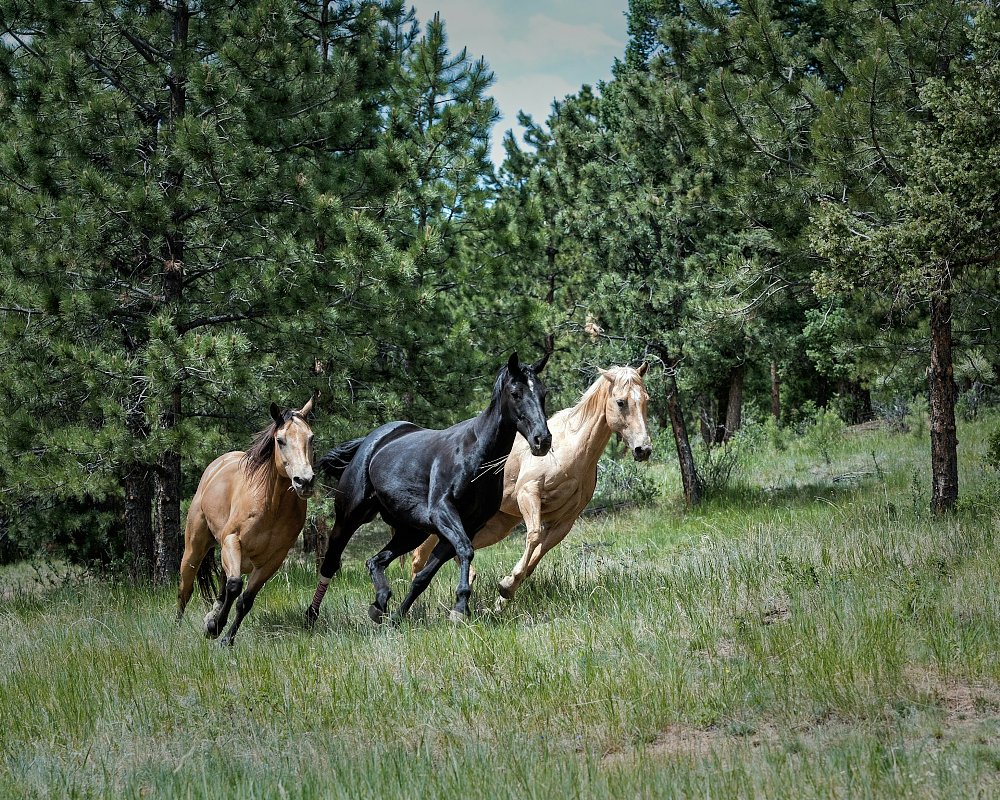
Surpassing the built-in 20-degree barrier
Back to riders on motorcycles. We have a very similar aversion to falling, based on a hardwired threshold that we must learn to ignore on the basis of a) more accurate understanding, b) interpersonal consensus and support, and c) experiential evidence. First, however, let's see what's up with this leaning threshold thing.
Why are we stuck at X degrees of lean angle? It turns out we share with other land mammals a natural lean angle tolerance limit of about 20 degrees. This is what all such creatures have learned — through eons of evolution and their own individual histories — is typically allowed by the physics of their bodies, gravity, and earthly terrain. A human runner (or a horse) in normal circumstances will feel comfortable tilting up to 20 degrees from vertical while rounding a curve. Exceeding this angle invites a fall, either through loss of traction or an imbalance between (so-called) centrifugal force and gravitational pull. We unwittingly and involuntarily transfer these expectations to motorcycle riding, even though they don't apply to this "unnatural" situation: a bike/rider unit has parameters of traction and centrifugal force management that far exceed those of a running biped or galloping quadruped.
This automatic transfer of expectations is seriously problematic, not only because it makes imitating Marc Márquez difficult for an aspiring racer, but also because it reduces our options for evasive maneuvering on the street or trail. I may "know" I have more lean angle in reserve when I suddenly realize the corner I'm in has a decreasing radius or a hazard in my path, but if my body still resists crossing the 20-degree barrier I won't be able to make use of my machine's capabilities. Sure, there are good arguments here for other tactics, like the use of additional trail braking to tighten my arc, but it's always better to have more options instead of fewer, not to mention the greatly enhanced enjoyment and confidence that comes with increased lean angle tolerance. So how do we make like Jim Morrison (or our racetrack heroes) and break on through to the other side?

Armed with evidence, rewiring the circuits
Like the baby on the visual cliff, we ultimately need experiential evidence if we're to transcend fear. We can pursue education about the objective facts of tire grip, surface traction variables, the equilibrium of relevant physical forces, how effective control inputs work, etc. Intellectual insight can be helpful, but even more powerful will be hearing trusted others describe the process in the context of a friendly teaching relationship, and watching them demonstrate these things — seeing with our own eyes that their bike doesn't flop to the ground in front of us as they lean over further than we feel comfortable doing.
This is one type of evidence, but still not the most compelling. The game-changer will be our firsthand experience of surviving lean angles we'd thought were impossible. We must crawl out onto that clear Plexiglass before we can develop solid faith in its ability to support our weight. True confidence arrives only after we've collected the hard evidence; until then, we're only operating on hope and trust.
To gather that hard evidence, we have to take baby steps. Pushing too hard too quickly will provoke internal alarms too loud to ignore, distracting us and increasing the odds our efforts will indeed come to a bad end, which will compound our apprehension on the next attempt. Imagine the mother screaming at her baby to venture out onto the Plexiglass. This would only make the child more upset and less likely to take on risk. Small increments of challenge allow us to expand our comfort zone without becoming overwhelmed. We can pay close attention to our actions and their actual, rather than feared or expected, effects. And we can deliberately wear in new grooves of revised expectation by repeatedly testing and proving the evidence with practice.
Recalibrating our neurological hardwiring is possible, but it takes strategic efforts. First, it's crucial to gain a vivid visceral appreciation of the effect power at the rear wheel exerts against gravity. Remember those clutch friction-zone exercises from your early riding instruction? "Trials stops" (as in trials bikes, not judicial proceedings) serve as an extension of those lessons. At a crawling pace on level ground, with only enough throttle to avoid stalling (maybe none at all, depending on your bike), pull in the clutch until you feel the bike's forward momentum wane and it starts to teeter, like it's going to topple over. Now, without moving your feet off the pegs, smoothly let the clutch back out to keep the bike upright, adding a wisp of throttle if necessary. Yes, you'll be doing some of the balancing with your body position and inputs on the handlebar, but the goal here is to teach your nervous system to tolerate the sensation a fall is imminent and develop the counterintuitive reflex of feeding power to the rear wheel to remedy this, rather than stabbing at the ground with your foot or making panic steering moves. For fun, challenge your riding buddies to "slow races." See who can reach the other side of the parking lot or field last without wandering off their line or dabbing a foot.
Most riders automatically respond to any perception of threat by chopping the throttle and squeezing the clutch and brake levers; we naturally want to slow down when feeling insecure. While this may be appropriate in some situations, it's exactly the worst response in others. If a motorcycle is threatening to drop onto its side, grabbing the brake and cutting power will absolutely guarantee machine and rider both go to ground. Once a rider has developed the reflex of adding power to hold their bike up, much of their fear of leaning will be resolved.
Once trials stops go from causing anxiety to becoming tedious, the same principle can be practiced in curves at all different speeds, with the rider's body learning that leaning can be readily and reliably controlled with the throttle (the clutch is no longer part of this process during cornering). Whether executing an ultra-low-speed U-turn or strafing the apex of a fast sweeper, a bit of added power keeps the bike from falling.
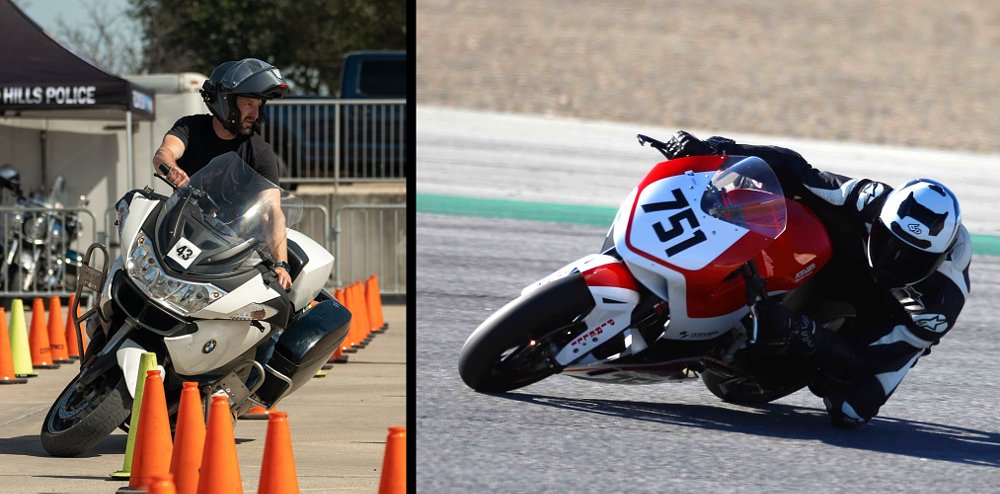
Of course, there are very important other considerations, too, like moving our torso to the inside or outside of the bike's centerline while cornering, looking through the curve, and keeping our eyes level with the horizon. All of these impact our sense of security while leaning, but they're outside the scope of this discussion. I'll just note that, in general, the bike is leaned separately beneath us during relatively low-speed cornering, with our body remaining more upright. In higher speed curves, we usually lean to the inside and may hang off in more extreme cases, which is actually a method of reducing the lean angle required of the bike to maintain a desired speed and arc. In the first case, we must get comfortable leaning the motorcycle to a degree that seems sure to invite disaster. In the second, we must get comfortable with both bike and body leaning further than seems safe, or even possible.
A second exercise involves riding in circles in a level, empty lot free of surface irregularities and debris. Set up markers (e.g., cones, halved tennis balls) to establish a circle 40 to 50 feet in diameter. Ride around outside this perimeter at an easy pace, maybe only 10 to 15 mph at first. Concentrate on maintaining a rock-steady throttle opening and keeping your eyes focused directly across the circle's center to the point opposite your bike. Use your peripheral vision to stay a constant distance from the markers.
Consciously notice the sensations in your body. Can you feel the front tire's grip through the handlebar? Are you tense somewhere (especially in your arms)? What changes when you exhale deeply and relax? Are you actively secured in the saddle, with your outer knee pressed against the tank and the balls of your feet on the pegs? Or is your lower body limp and offline?
When you've consistently mastered all this, increase your speed a little. Maintaining the same arc at a higher speed will automatically require more lean, so you'll have to add a touch of countersteering to adjust the angle accordingly. Hold the new speed steady, but make use of the throttle's lifting action if you start drifting or falling inward, closer to the markers. This will counteract both the drifting and the falling without requiring any change in steering, reinforcing muscle memory from the trials stops.
When the higher speed becomes boring, add a little more and work on keeping all the other elements correct at the faster pace. Take breaks to avoid getting dizzy, and alternate clockwise and counterclockwise rotations. You'll be surprised to find one direction noticeably harder than the other; that's true for everyone and it's just information about which direction needs more work. Another way to advance is to decrease the circle's diameter, but that tends to be scarier than adding a few mph to the familiar setup; wait on this until you're very comfortable at steep lean angles around the larger circle.
Ideally, do the circle exercise with a friend (or a tripod) so you can see a recording of your real-life lean angle. It's certain to be less than you imagine, maybe a lot less. That’s no reason to feel ashamed or cowardly, it's simply reassurance you're not as close to crashing as your senses tell you. Remember, they're working on the pre-programmed assumption 20 degrees is all nature allows, so anything beyond that will feel "extreme." You're re-programming them to accept more than twice that angle is possible on a motorcycle. As your internal alarm system quiets and recalibrates, your cornering speed will increase along with your comfort level.
Although dragging a knee is best reserved for track days, you'll find more pronounced body lean can benefit balance and allow the use of less motorcycle lean angle (which equals less risk of traction loss, dragging hard parts, etc.) at the same speed, or more speed for the same motorcycle lean angle. At this stage, the limiting factor may no longer be your lean angle tolerance. Now, issues like finite tire traction — which were always relevant theoretically — will be more practically meaningful considerations, rather than mainly being phantasmagoric rationalizations for staying on the "safe" side of 20 degrees of lean.
At that point, you've evolved beyond your genetic neurological endowment to integrate the realities of motorcycle dynamics into your hardwired sensory apparatus; not quite a cyborg, but getting there!


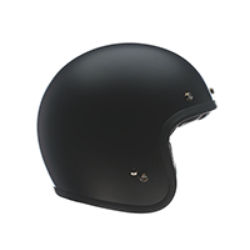

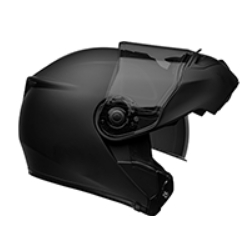

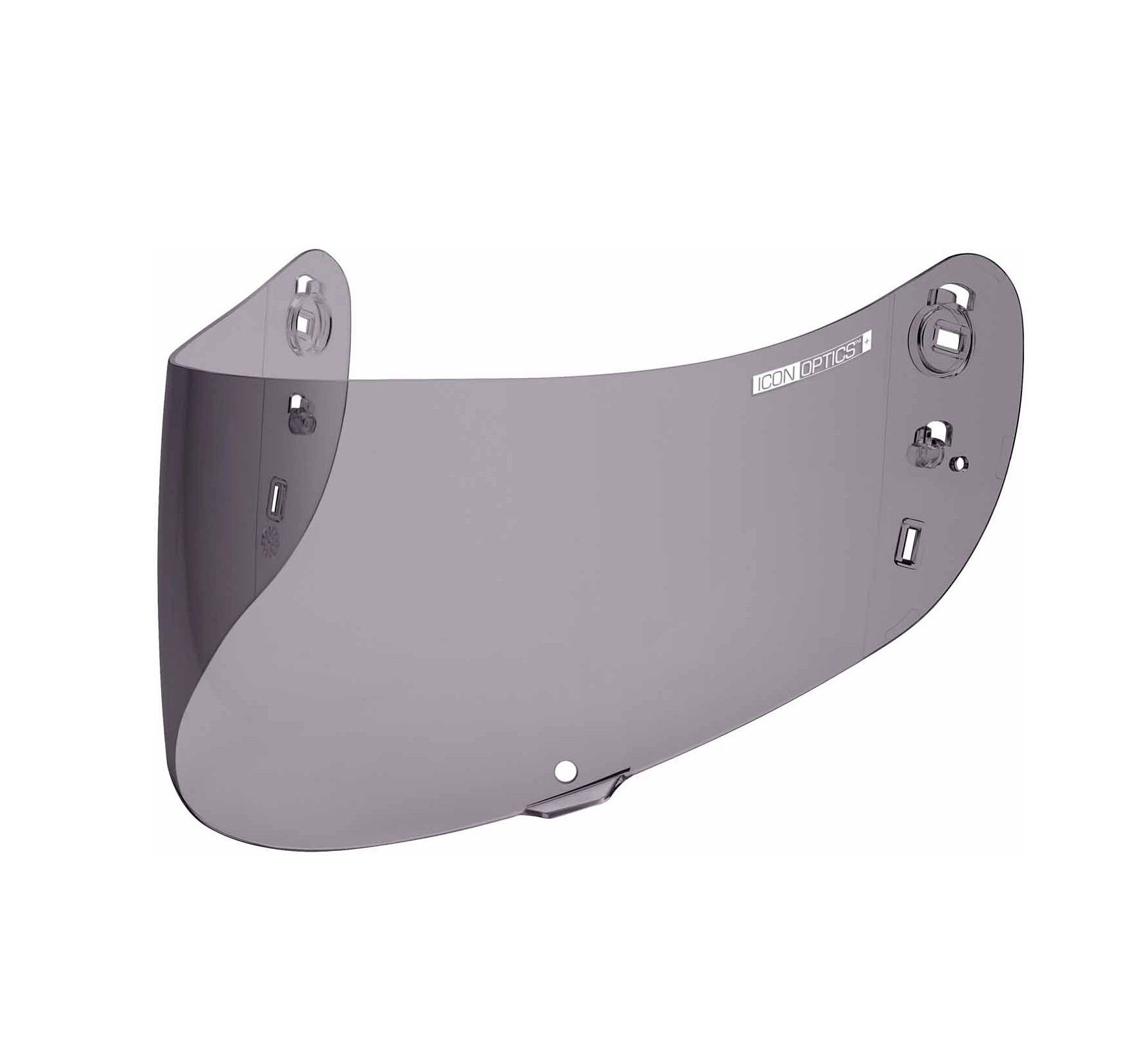
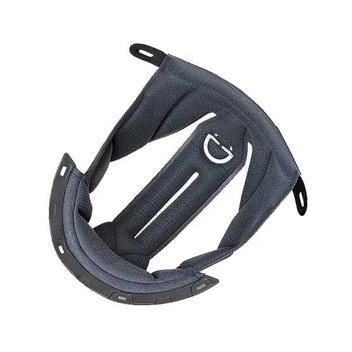
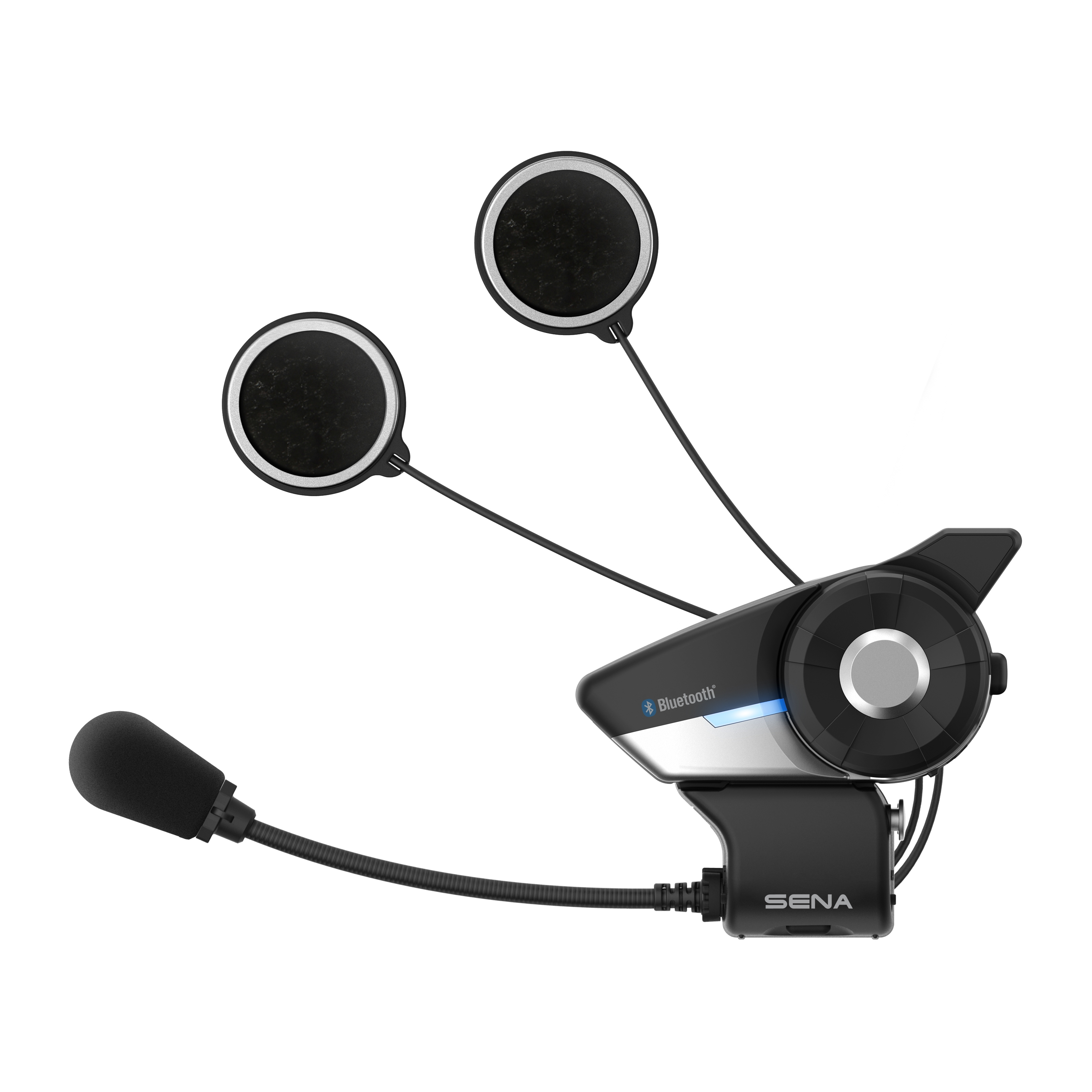


 Membership
Membership





